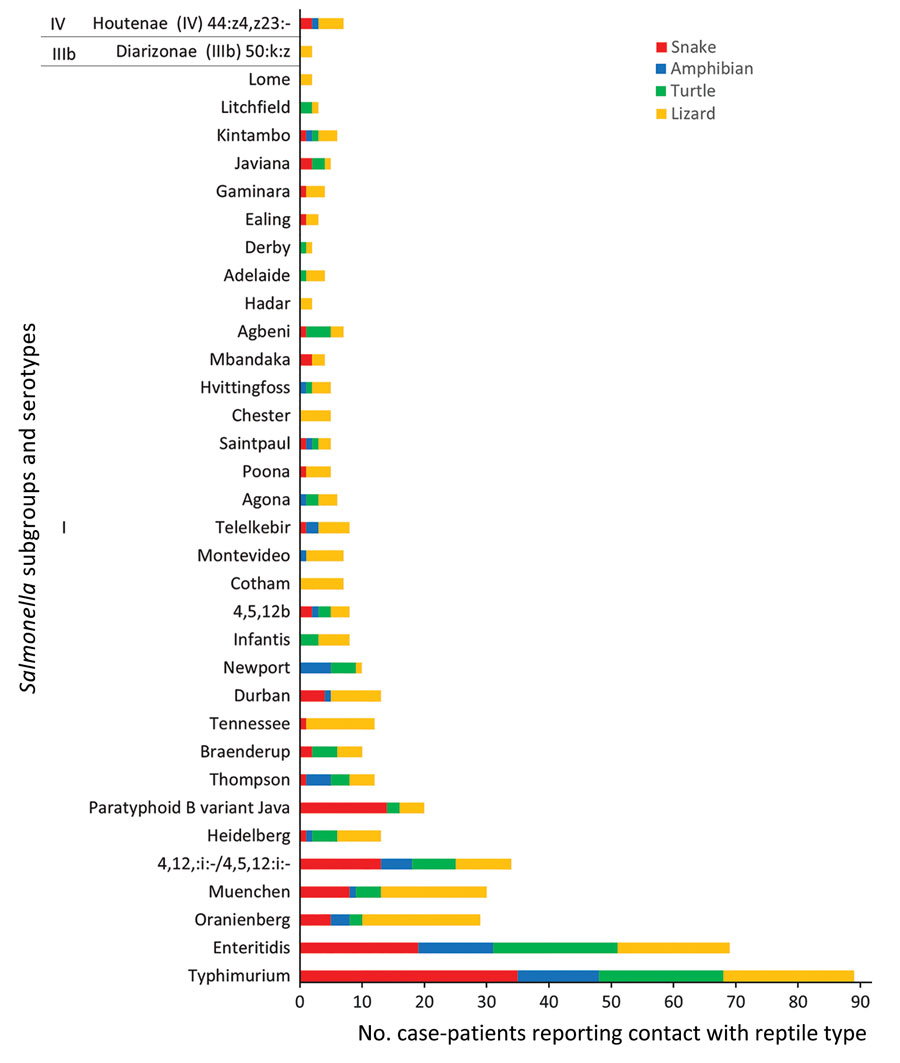Volume 31, Number 10—October 2025
CME ACTIVITY - Research
Reptile Exposure in Human Salmonellosis Cases and Salmonella Serotypes Isolated from Reptiles, Ontario, Canada, 2015–2022
Figure 2

Figure 2. Major taxonomic grouping of reptile or amphibian contact reported by sporadic locally acquired salmonellosis cases by reported Salmonella serotype for human case-patients (n = 513) in study of reptile exposure among human salmonellosis cases and Salmonella serotypes isolated from reptiles, Ontario, Canada, 2015–2022. Reptile species were not mutually exclusive (i.e., some case-patients reported contact with >1 species); thus, reptile species counts may sum to more than the number of cases reported for each serotype over the study period.
Page created: August 01, 2025
Page updated: September 23, 2025
Page reviewed: September 23, 2025
The conclusions, findings, and opinions expressed by authors contributing to this journal do not necessarily reflect the official position of the U.S. Department of Health and Human Services, the Public Health Service, the Centers for Disease Control and Prevention, or the authors' affiliated institutions. Use of trade names is for identification only and does not imply endorsement by any of the groups named above.